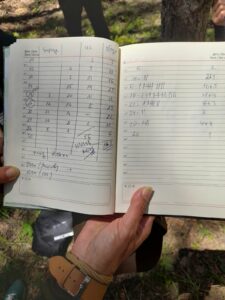In 2020, Southwest State Enterprise, as an associated beneficiary, launched a project called LIFE19CCA/SK/001276 with the acronym “CLIMAFORCEELIFE” under the LIFE program of the EC for adaptation to climate changes. In the implementation of sub-activity: “Modern methods for thinning of coniferous plantations” in the Project, 1000 ha of white and black pine trees, in Vitoshko-Studena Hunting, Radomir Forestry, Nevestino Forestry and Kyustendil Forestry are planned to be thinned using non-traditional methods and modern technology.
A team of representatives of the SWSFE and the Department of Forestry at the Forestry University was created in order to upgrade and test the concepts in the joint project “Differentiated management of white pine trees in the SWSFE” and “General guidelines for the management of coniferous plantations” (Forestry Executive Agency, 2016).
A selection of plantations was made according to the degree of risk, different types of silvicultural measures were defined to increase the resilience of plantations, especially in relation to the risk of fires and climate droughts. Monitoring and evaluation of the results will be carried out, in order to prepare proposals, if necessary, for changes in the Forest Management Plans of the Forestry, as well as in the current regulations.
On 23rd and 24th June, 2022, on the territory of Kyustendil Forestry and Vitoshko Studena Hunting training on marking was held in connection with the implementation of the project’s goals. The training was conducted by experts from the Forestry University – Chief Assistant Dr. Neno Alexandrov and Chief Assistant Dr. Toma Tonchev. Representatives from the Forestry Executive Agency, the Certification Organization for Responsible Forest Management, directors and marking foresters from the territorial forestry divisions, as well as the project staff from each Forestry took part in the presentation of the methods and ways of marking, which are different from the traditional ones.
In total, more than 30 employees were trained, who will have the opportunity to apply what they have already learned this year.
The different types of thinning activities will be implemented in order to test which of the methods will be the most effective in transforming the plantations into more resilient species, especially in relation to fires and climate change. Coniferous trees occupy 22% of the state forest territories managed by the Enterprise. They are mainly located on steep eroded slopes and in water conservation areas. Most pine plantations are planted at lower altitudes, which makes them very vulnerable to climate change.










